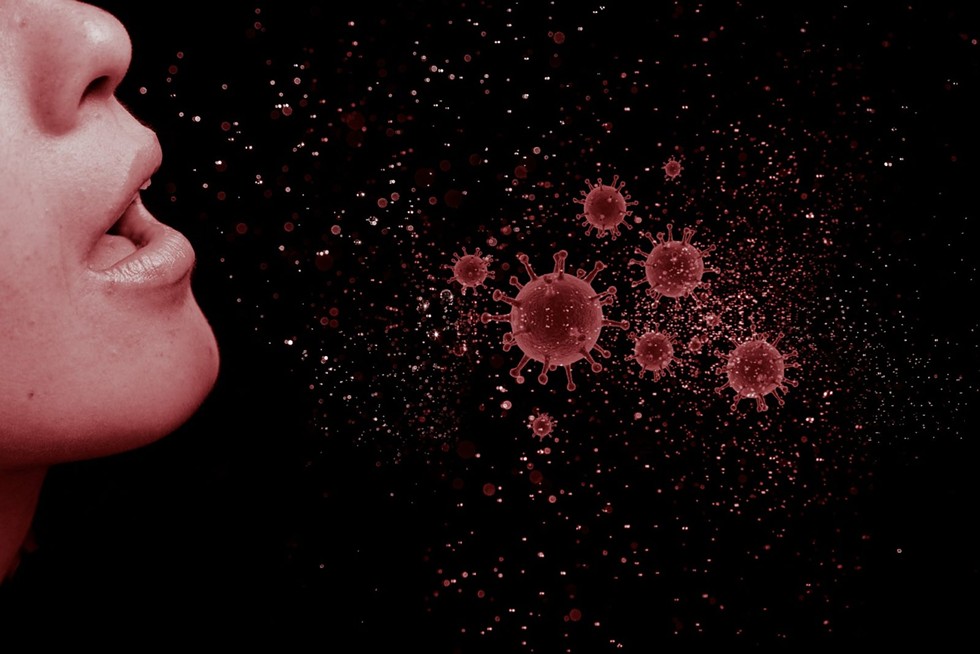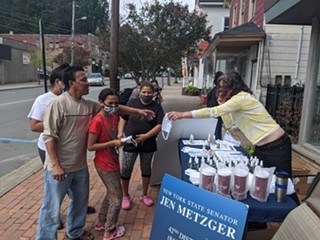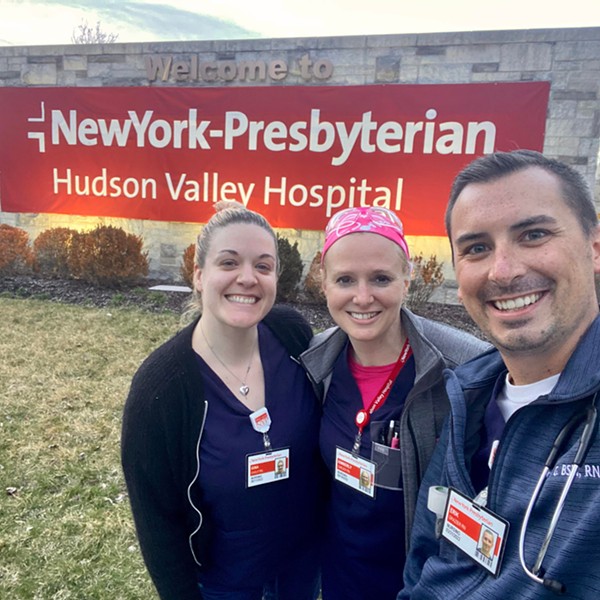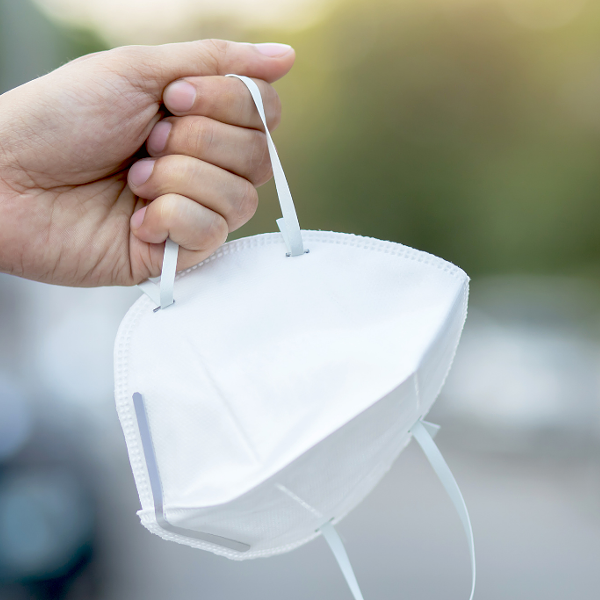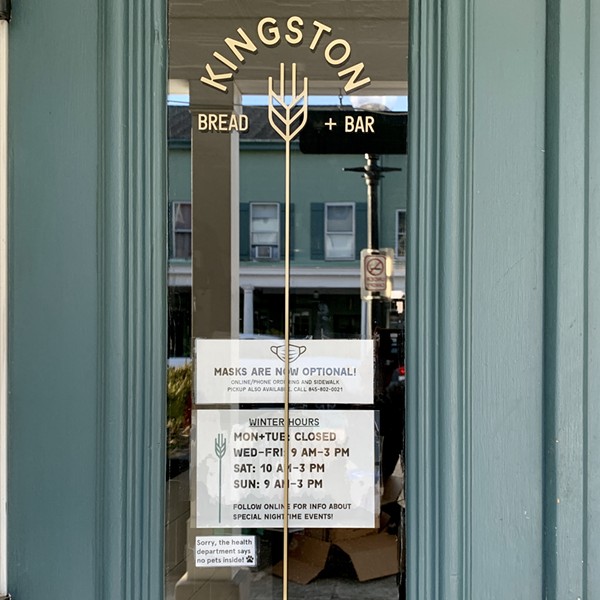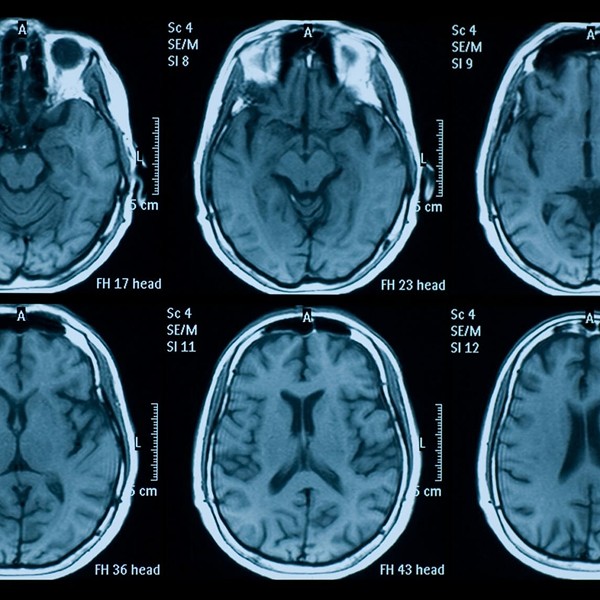This is a roundup of coronavirus news and announcements from New York State and Hudson Valley and Catskills counties for Saturday, September 19 through Monday, September 21.
NEW YORK STATE
450,473 cases confirmed (573 new)
9,980,765 tests performed (58,319 new)
Positive test rate: 0.97%
25,428 deaths (1 new)
468 hospitalizations
134 ICU admissions
New York State coronavirus page
New York State official pressroom
Hotline: (888) 364-3065
Scientists have been keeping a wary eye on the Centers for Disease Control and Prevention lately, after revelations that White House insiders have been applying political pressure on the agency’s scientific publications and recommendations. On Monday, the agency dug itself deeper into public scandal by abruptly removing newly revised language that stated that COVID-19 is transmitted through the air and can travel distances greater than six feet. Before it was removed, the new language was encouraging to some researchers, who hoped that the agency’s focus on airborne transmission might spark better policy and public conversations around ventilation and indoor air quality.
Airborne transmission of COVID-19 generally has been accepted in the scientific community for some time, although there has been argument over whether larger “droplets” or smaller “aerosols” are mainly responsible for transmission—and also over whether it makes sense to focus on droplet size for public health purposes. CDC officials say the language on airborne transmission was a draft that should not have been posted to the agency’s website without further review, but the abrupt shift in messaging has the public health world worried.
Europe managed to stamp out much of the COVID-19 outbreak that overwhelmed hospitals and brought widespread lockdowns this spring, but a second wave is now well underway on the continent: Daily case numbers in the European Union and the UK reached record highs last week, CNN reports, although European infection rates still lag far behind the US.
Deaths from COVID-19 in the US will surpass 200,000 in official counts in the coming days, although the true number of COVID-19 deaths is higher, because of cases missed in people who died before they could be tested. More than half of US states currently have rising case counts. “We may be in for a very apocalyptic fall, I’m sorry to say,” Baylor College of Medicine epidemiologist Peter Hotez told CNN recently.
SUNY Chancellor Jim Malatras had just one word for SUNY Oneonta students on Monday, after yet another picture emerged on social media of students partying: “Enough!” read a press release from the chancellor’s office, in its entirety. SUNY Oneonta President Barbara Jean Morris had a few more words for the situation: “The college is drafting charges against these students now to include immediate suspension and will act quickly to suspend any student whose reckless behavior endangers the health and welfare of our campus or the Oneonta community,” she wrote. “We have zero tolerance for this type of irresponsible and unsafe behavior and will always pursue this immediate action in the spirit of the overwhelming number of SUNY Oneonta students who followed safety protocols and lost out on a semester on campus because of the behavior of a few.”
Governor Andrew Cuomo told reporters in a Monday briefing that his administration is prepared to send state employees or the National Guard to help local boards of elections with the upcoming election, which is expected to involve intense logistical challenges. “We have personnel that we can make available, but they have to tell us what they need, and they have to be organized. It’s actually harder than it sounds,” Cuomo said. The governor’s comments were in response to a question from reporter Jesse McKinley about how the state planned to help “struggling” local election boards.
In recent audits of New York State’s Medicaid program, state comptroller Thomas DiNapoli found a whopping $700 million in “unnecessary, improper, or questionable” payments, mostly between 2016 and 2019. With the state facing a once-in-a-generation fiscal crisis, that’s a lot of money to be wasting; DiNapoli’s report recommends “better financial and management controls” to wring waste out of the program. Most of the unnecessary costs—about $605 million—were traced to missed opportunities to lower the cost of drugs under managed care.
COVID-19 takes a toll on the hearts of some patients. Reports of lasting heart damage in recovered patients and lingering myocarditis in otherwise healthy young athletes have sparked fear and painted a picture of a mysterious virus. But although COVID-19 might be especially deadly for a common human virus, it isn’t alone in causing heart damage, Ed Yong writes for The Atlantic this week. Lingering heart damage, along with some of the other mysterious chronic symptoms experienced by “long-haul” COVID-19 survivors, can be triggered by a wide range of viruses. “These illnesses have been dismissed and trivialized for decades. Few doctors know how to deal with them. Few scientists study them,” Yong writes. “That might change as thousands of people with similar problems are emerging all at once, and are pushing for recognition and research.”
School was back in session in New York City on Monday for about 90,000 preschool and special-education students. Elementary school is slated to begin again in person on September 29, and middle- and high-school students are slated to return on October 1—although, as we’ve already seen, plans can change fast in the COVID-19 era.
At the height of the pandemic, New York City established a supply reserve at a colossal warehouse across the river in New Jersey. Now it’s being repurposed as a food-aid distribution hub, with some 18 million meals. On the eve of the first deliveries to food pantries in Brooklyn and Queens, the local news site The City takes a look inside New York City’s emergency food-aid stockpile.
Announced by New York State on Monday and over the weekend:
- There was only one death from COVID-19 in New York State yesterday, matching the lowest single-day total of the pandemic.
- Governor Cuomo has extended the moratorium on pandemic-related commercial evictions until October 20.
Since mid-May, The River has been collecting and charting data on the number of active COVID-19 cases by county in the Hudson Valley and Catskills. Below is a Flourish animation we have compiled that shows the rate of active cases per 10,000 residents for each county over time, from May 12 through the present date.
LOWER HUDSON VALLEY
County coronavirus pages: Rockland, Westchester, Putnam
University coronavirus pages: Sarah Lawrence, Iona, SUNY Purchase, Manhattanville, Westchester Community College, Rockland Community College, Dominican, Mercy
Westchester County Executive George Latimer struck an almost poetic note in his weekly COVID-19 briefing Monday, talking about the changing of the seasons during the pandemic. “We’re now starting the first day of fall, we have survived the whole summertime period,” he said. “All of our beaches and pools that were open are now closed, all of the summertime vacation travel, the Fourth of July weekend, the Labor Day weekend—all of those crucibles we have passed through, and we still in Westchester County, and New York in general, have kept a low level of infection.” Latimer was joined this week by Elmsford village Mayor Bobby Williams, who spoke about the challenges of governing through the pandemic on the village level.
Putnam County released its weekly update of confirmed cases by town. There have been 21 new cases since last week.
A Yonkers teachers union is suing the school district for denying telework requests for staff with preexisting conditions. The suit, filed by Yonkers Federation of Teachers, alleges that more than 40 telework requests have been denied to staffers with conditions including cancer and HIV, contravening guidance issued by the state departments of education and health.
The Empire City Casino reopened in Yonkers on Monday, after being shuttered since March because of pandemic restrictions.
MID-HUDSON VALLEY
County coronavirus pages: Orange, Dutchess, Ulster, Columbia
University coronavirus page: Bard, Vassar, Marist, SUNY New Paltz, SUNY Ulster, Columbia-Greene Community College, SUNY Orange
One in five Columbia County residents has been tested for COVID-19 so far during the pandemic, county health director Jack Mabb said in a Monday press release. County health officials looked into the data to see how many of the tests done so far were repeat tests on the same individuals. “We wanted to take a look at the breakdown of tests done each month to see if there has been a dropoff in testing, which might explain why we had such a low incidence rate. But there was no dropoff and the logical conclusion is that we are low in positives because people continue to do the right things,” Mabb said. He urged county residents to stay “diligent” and keep up precautions like handwashing, social distancing, and mask-wearing as the weather turns colder and more activities move indoors.
While the COVID-19 pandemic rolls on, Mid-Hudson counties are contending with another outbreak: A virus that is killing deer. Dubbed “epizootic hemorrhagic disease,” or EHD, the disease is spread by biting midges and cannot be spread to humans, but causes rapid death followed by faster-than-normal decomposition in white-tailed deer. LoHud.com reports that the state Department of Environmental Conservation has found evidence of the disease in Orange and Putnam counties, and is investigating reports in Dutchess and Ulster.
People’s Place, a food pantry in midtown Kingston, will give away about 30,000 pounds of meat, dairy products, and frozen fruit at a pop-up meat market this Wednesday from 9am to noon at the nonprofit (17 St. James Street). Among the items available are chicken, pork chops, sausage, fish, peanut butter, eggs, cottage cheese, butter, milk, cream cheese, frozen blueberries, frozen strawberries, and grapefruit juice.
SUNY New Paltz announced one new COVID-19 diagnosis among its student body on Monday. According to the college, the student lives off-campus but is enrolled in an in-person class. The student is in isolation until cleared by Student Health Service. Sixteen SUNY New Paltz students have tested positive since the fall semester began, with five cases currently active.
CATSKILLS
County coronavirus pages: Sullivan, Delaware, Greene, Schoharie
University coronavirus pages: SUNY Cobleskill, SUNY Delhi, SUNY Sullivan
Senator Jen Metzger and staff will be at the Fallsburg Fire Company on 17 Lake Street on Tuesday, September 22, from 4pm to 6pm, to distribute free face masks and hand sanitizer and help people fill out the 2020 census.
The Sullivan County Department of Motor Vehicles, which has been doing transactions via drop boxes, is switching to an appointment-only system beginning Monday, September 28.
Greene County released an update on cases by town for the first time since April. More than half of the cases in the county so far (175 out of 319) have been in the town of Catskill, and of those, 92 were found in nursing facilities. Like their peers in some other rural counties, Greene County officials have been reluctant to release much town-specific information, fearing that it might inadvertently reveal people’s medical information. “We’re far enough into the game, now there’s not a lot of identifiable information,” legislative chair Patrick Linger told the Daily Mail. Every county in the Catskills and Hudson Valley has released town-level case info at some point except Delaware.
Delaware County is changing the way it reports new cases, unveiling a “dashboard” on the county public health website that displays the latest numbers. The county currently has two known active cases of COVID-19.
After a spike of new cases last week, Schoharie County cases are back down: No new cases have been found in the county since Monday, September 14, according to New York State data.
On-the-ground local reporting and analysis has never been more important, and that’s what The River aims to provide. But we need your help to continue the work we’re doing. Will you support our journalism today?
OF INTEREST?
The River has a guide on where, how, and when to get tested for the coronavirus in the Hudson Valley and Catskills. To read more of our coronavirus coverage, visit our coronavirus page.
The River is collaborating with WGXC to announce these updates over the air. To listen, tune in to 90.7 FM at midnight, 5am, 7am, or 9am, or visit the audio archive online.
La Voz, una revista de cultura y noticias del Valle de Hudson en español, está traduciendo estos resúmenes y co-publicandolos en su página web. Leyendo aqui. También puede escuchar actualizaciones diarias por audio en el show “La Voz con Mariel Fiori” en Radio Kingston.







